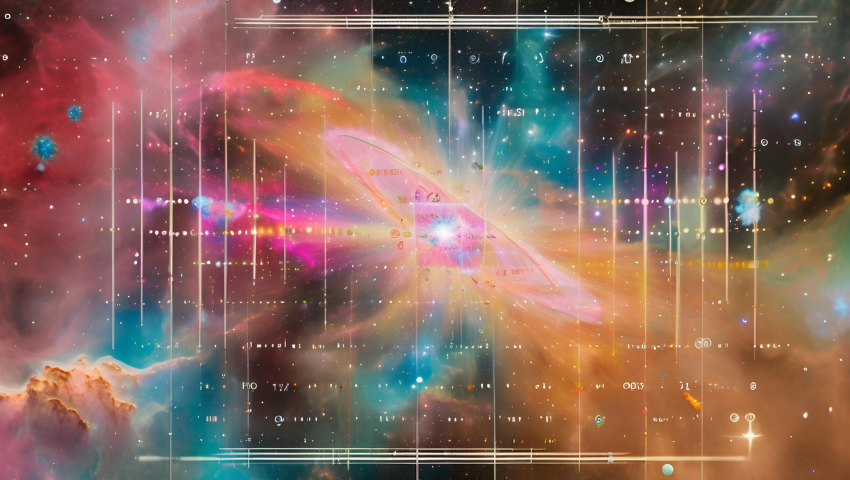Welcome to Spacewink, where cutting-edge technology intersects with ancient wisdom to shape the future of humanity. At Spacewink, we are pioneering the frontier of space technology, leveraging Quantum Machine Learning (QML) to interpret complex space data like never before. Join us on this journey as we delve into the innovative applications of QML and explore how Spacewink is leading the way in transforming space data interpretation.
Importance of Space Data Interpretation
Space exploration generates vast amounts of data, from observations of celestial bodies to measurements of cosmic phenomena. However, this data is often complex and challenging to interpret. Here's why space data interpretation is crucial:
- Advancing Scientific Knowledge: Interpreting space data helps scientists understand the universe better, from the behavior of galaxies to the properties of dark matter.
- Space Exploration: Accurate data interpretation is vital for planning missions, understanding space environments, and ensuring the safety of astronauts.
- Technology Development: Insights gained from space data can lead to the development of new technologies with applications on Earth, such as advanced imaging systems and communication satellites.
Challenges in interpreting space data include the sheer volume of information, the complexity of celestial phenomena, and the need for precise analysis techniques.
Now, let's explore how Quantum Machine Learning is revolutionizing space data interpretation.
Quantum Machine Learning Applications in Space Data Interpretation
What is Quantum Machine Learning?
Quantum Machine Learning combines principles of quantum computing with machine learning algorithms to process and analyze data. Unlike classical computers, which use bits to represent information, quantum computers use qubits, allowing for parallel processing and handling of vast datasets.
How Does Quantum Machine Learning Work?
In QML, quantum algorithms are utilized to perform tasks like data classification, pattern recognition, and optimization. Quantum computers excel at handling complex, probabilistic data sets, making them ideal for analyzing space data.
Advantages of Quantum Machine Learning
- Faster Processing: Quantum algorithms can process large datasets much faster than classical computers.
- Handling Complex Data: QML can handle complex, multidimensional data more efficiently.
- Improved Accuracy: Quantum algorithms can provide more accurate predictions and classifications.
Challenges and Limitations
While QML offers promising capabilities, challenges such as hardware constraints, high error rates, and algorithmic complexity need to be addressed for practical implementation.
Quantum Machine Learning at Spacewink
At Spacewink, we leverage Quantum Machine Learning to tackle various challenges in space data interpretation:
- Predictive Analysis of Celestial Events: Using QML algorithms to predict astronomical phenomena such as supernovae or asteroid trajectories.
- Space Object Classification: Classifying celestial objects based on their characteristics using advanced QML techniques.
- Exploring Dark Matter and Energy: Utilizing QML to analyze complex data related to dark matter and energy, helping unravel the mysteries of the cosmos.
Breakthroughs Achieved by Spacewink
Spacewink is at the forefront of Quantum Machine Learning applications in space data interpretation. Here's how we're pushing the boundaries:
Introduction to Spacewink's Innovations
Spacewink combines expertise in AI, machine learning, and space technology to drive innovation. Our interdisciplinary approach allows us to tackle complex challenges in space data interpretation effectively.
Quantum Machine Learning at Spacewink
We have embarked on several projects harnessing QML to revolutionize space data analysis:
- Project StarGaze: Using QML algorithms to analyze telescope data and predict celestial events with high accuracy.
- GalaxyNet: Developing QML models to classify galaxies based on their shapes, sizes, and spectral data.
- DarkProbe: Investigating dark matter and energy phenomena using advanced QML techniques, aiming to unlock the secrets of the universe.
Case Studies
Let's explore some examples of how Spacewink's QML initiatives have made significant breakthroughs:
- Case Study 1: Predicting Solar Flares
- Spacewink's QML model accurately predicted a series of solar flares, enabling early warnings for space missions and satellite operators.
- Case Study 2: Galaxy Classification
- By employing QML algorithms, Spacewink developed a system capable of classifying galaxies with unprecedented accuracy, aiding astronomers in their research.
- Case Study 3: Dark Matter Analysis
- Spacewink's DarkProbe project made strides in understanding dark matter structures using QML, contributing to astrophysical theories.
Future Implications and Possibilities
The integration of Quantum Machine Learning in space data interpretation opens up exciting possibilities for the future:
Advancing Space Exploration
- Precision Missions: QML can help plan more precise space missions by accurately predicting space phenomena and hazards.
- Space Colonization: Improved space data interpretation can pave the way for sustainable space habitats and long-term space missions.
- Exploration Beyond Our Solar System: QML could aid in analyzing data from distant exoplanets and exploring the potential for extraterrestrial life.
Potential Discoveries
- Understanding Dark Matter and Energy: Further advancements in QML may lead to breakthroughs in understanding the nature of dark matter and energy.
- Mapping the Universe: QML algorithms could facilitate the creation of detailed maps of the universe, revealing its structure and evolution.
Collaborative Efforts
- Industry Collaboration: Collaboration between space agencies, research institutions, and technology companies is essential for advancing QML applications in space research.
- Knowledge Sharing: Spacewink is committed to sharing expertise and collaborating with partners to accelerate innovation in space exploration.
As we look ahead, the possibilities for Quantum Machine Learning in space exploration are limitless.
Conclusion
In conclusion, Quantum Machine Learning is revolutionizing space data interpretation, and Spacewink is at the forefront of this transformation. By leveraging QML algorithms, we are unlocking new insights into the cosmos and pushing the boundaries of space exploration.
Spacewink's expertise in AI, machine learning, and space technology is instrumental in solving complex challenges and driving innovation in space data analysis.
Join us as we continue to explore the cosmos and unlock the secrets of existence with Quantum Machine Learning at Spacewink.
